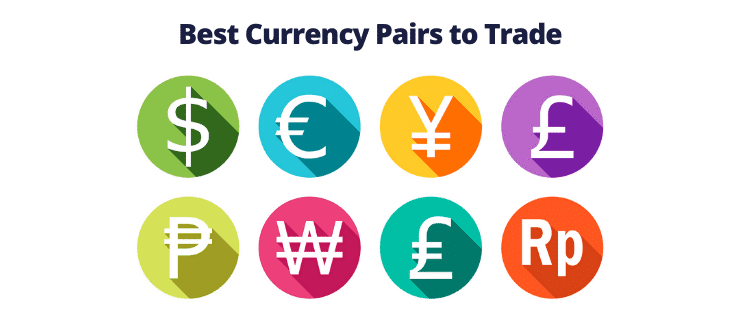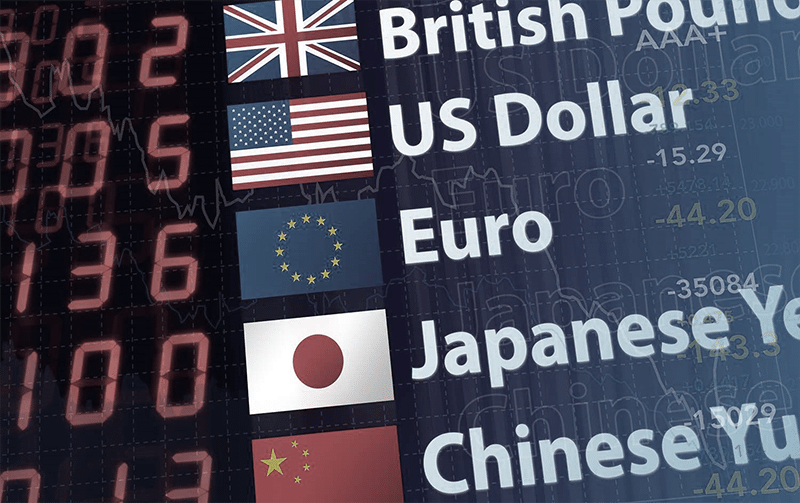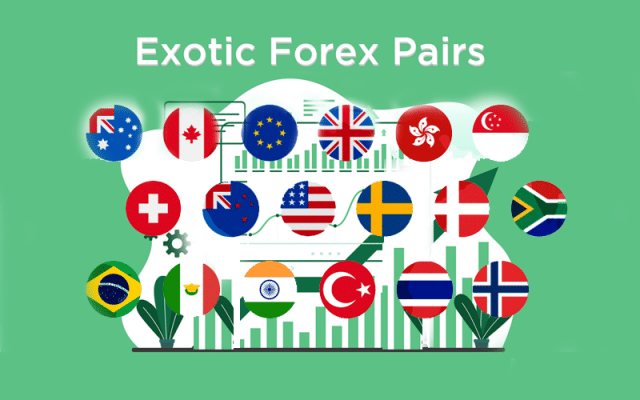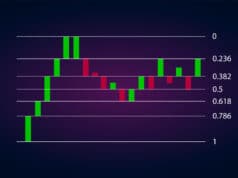Based on trading volumes, availability, and liquidity of the currencies, currencies can be categorised into three types. The first category houses the world’s major currencies, like the USD, GBP, and EUR. The second category is for the minor currencies, such as the New Zealand dollar, the Australian dollar, and the Canadian dollar.

Then there are some currencies that fall under the third category and they are called the exotic currencies. These currencies usually come from not fully developed countries. They can be fully convertible, partially convertible, or non-convertible. The total number of fully convertible major, minor, and exotic currencies is seventeen.
So, to put it simply, exotic currency pairs are any currency pair that is not a major or minor pair. These pairs are made up of one major currency and an exotic currency. The best exotic pairs for trading are JPY/NOK, GBP/ZAR, AUD/MXN, EUR/TRY, and USD/THB.
Categories You Need To Know
As mentioned earlier, exotic currencies fall into three categories, such as –
- Fully convertible – A trader can trade a fully convertible currency without any restrictions imposed by the government. Although there are a few exceptions, they usually come from more stable countries. For example, the Mexican peso is a fully convertible exotic currency.
- Partially convertible – A partially convertible exotic currency is the legal tender of a country. Traders trade it in low volumes in the global foreign exchange market. The exchange of this currency is partly controlled by the state issuing it. For example, the Indian rupee is a partially convertible exotic currency.
- Non-convertible – Also known as ‘blocked currencies’, a non-convertible currency is the legal tender of a country. This currency is not traded in the international forex market at all, generally due to government restrictions. It is an approach of security as the economy of an exotic currency is usually specifically vulnerable to market movements. If the exotic currency increases or decreases in value sharply, the adverse effects can cause problems for the country. The only way you can trade a non-convertible currency is through the black market. The Chilean peso and the Brazilian real are two non-convertible currencies that represent considerable challenges for businesses operating in Chile and Brazil respectively.

Let’s Check Some Exotic Currencies
The top ten examples of exotic currencies include –
- Mexican peso (MXN) – It is a free-floating and fully convertible exotic currency. The spot of this currency is fully convertible/liquid deliverable forwards possible up to one year. The currency owns 2.5% of the global forex market share out of 200%.
- Chinese yuan (CNY) – This is a managed, non-convertible exotic currency with spots upon request/liquid deliverable forwards possible with NDF contracts. It is usually settled between a month and a year. CNY owns 2.2% of the global forex market share out of 200%. Currently, China is attempting to open up the yuan so it can be traded freely on the global forex market. According to some commentators, it has the potential of being the world’s reserve currency, replacing the USD in the near future.
- Russian ruble (RUB) – Ruble is a managed free-floating and fully convertible exotic currency that has 1.6% of global forex market share out of 200%. Its spots are fully convertible/liquid deliverable forwards possible up to one year.
- Hong Kong dollar (HKD) – HKD is another managed free-floating and fully convertible exotic currency that has 1.4% of the global forex market share out of 200%. The spots of this currency are fully convertible/liquid deliverable forwards possible up to three years.
- Singapore dollar (SGD) – It is also a managed free-floating and fully convertible exotic currency with fully convertible/liquid deliverable spots forwards possible up to 2 years. There are MAS restrictions on offshore SGD lending. SGD owns 1.4% of the global forex market share out of 200%.
- Turkish lira (TRY) – TRY is a free-floating and fully convertible exotic currency. The spots of this currency are fully convertible/liquid deliverable forwards possible up to three years. It has 1.3% of global forex market share out of 200%.
- South Korean won (KRW) – this is a managed floating and partially convertible exotic currency. The spots of this currency are available on documented commercial transactions only or forwards generally processed through NDFs. It owns 1.2% of the global forex market share out of 200%.
- South African rand (ZAR) – A free-floating and fully convertible exotic currency, ZAR owns 1.1% of the global forex market share out of 200%. The spots of this currency are fully convertible/liquid deliverable forwards possible up to two years.
- Brazilian Real (BRL) – BRL is a non-convertible exotic currency as it cannot be transferred out of Brazil. Its spots are non-convertible/forwards possible generally up to two years through NDFs with US dollar. It owns 1.1% of the global forex market share out of 200%.
- Indian rupee (INR) – It is a managed float and partially convertible exotic currency. As for its spots, only the purchase of INR is possible / forwards possible typically up to one year through NDFs. Indian nationals can import and export up to INR7500 at a time but foreign nationals are prohibited from doing this. The currency owns 1.1% of the global forex market share out of 200%.
When you Plan to Trade It
Compared to major pairs, exotic pairs are not traded much. This is why the transaction costs for these pairs are high. Moreover, some risks are involved with exotic pair trading due to less liquidity, and volatility. Another major issue is political uncertainty as it can often result in big fluctuations in price. If you want to trade exotic pairs, wait until you become an advanced trader and ensure risk management.
Conclusion
If you are a beginner, then it is best to stay away from exotic currency pairs and stick to major pairs for the time being. Keep in mind that a lack of knowledge is a big risk in trading. So, make sure you learn about exotic currencies inside out before trading them. That said, trading exotic pairs is definitely worth it if you can do it right.




